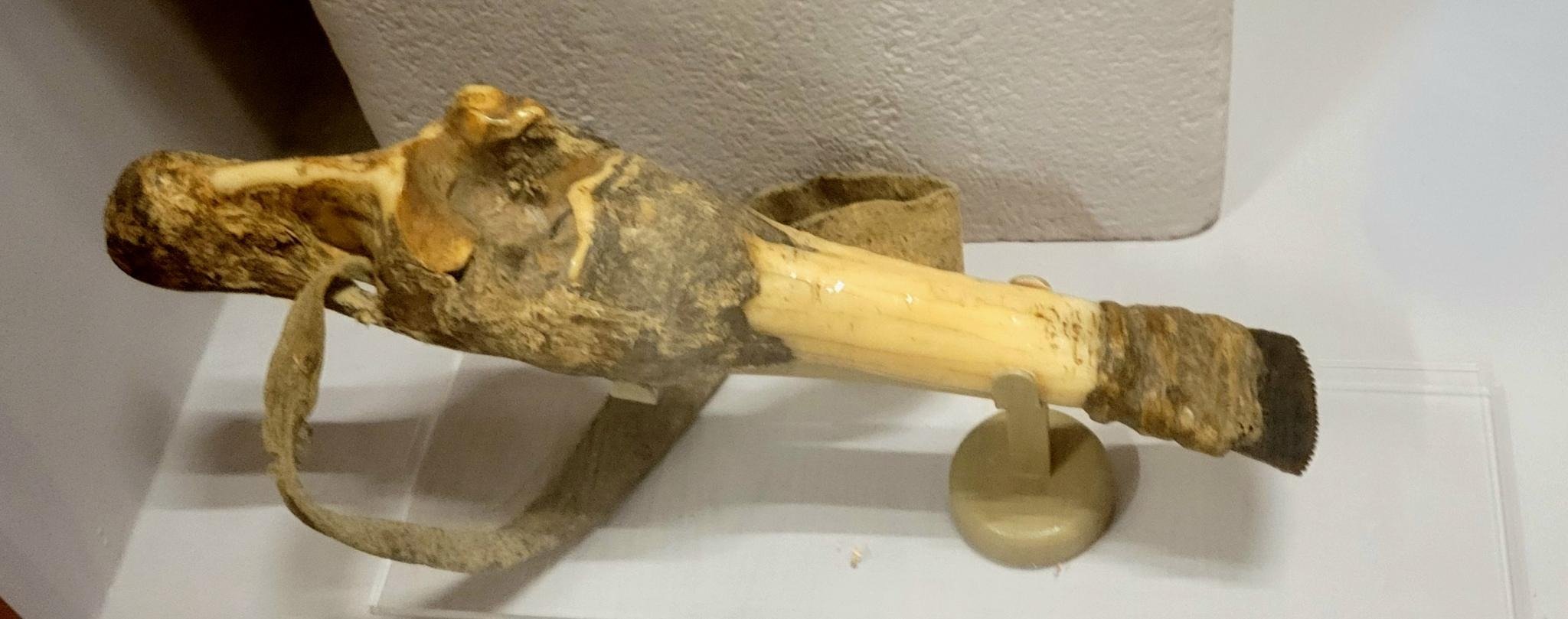Buffalo Hide Scrapers
These buffalo hide scrapers, made of elk horn and metal, were used to clean buffalo hides. Processing buffalo hide, often a woman's job, included stretching the hide and then using the scraper to remove fat and flesh. If the hides were not cleaned properly, they could rot and spoil. Scraping also acts to make the hide thinner, lighter, and more manageable. The hide would then be tanned, which creates a soft, supple finish.
The largest terrestrial animal in North America, the American bison, also commonly referred to simply as buffalo, supplied native nations with an abundance of resources. With males weighing in over a ton and as tall as six feet at the shoulders, bison offered ample meat to nourish and fill bellies, sinew for sewing, bones for tools, and hides for warmth on the body and to enclose housing.
At one point there was an estimated 30-60 million bison roaming the grassy plains before European contact. Native nations employed numerous hunting techniques to take down these massive beasts, including the “buffalo jump”, in which any number of bison could be driven over the edge of a cliff, harvesting a large sum of resources in one hunt.
Buffalo hunting was done on foot prior to European contact but with the introduction of horses, an animal that many plains nations made great use of, came major changes in hunting and harvesting bison. With the help of horses, packing up and moving after bison through the seasons became quicker and allowed more to be carried at a time. Bison acted as a major portion of the economy for plains tribes, what resources weren’t needed for their own use, tribes could use for trade. With a faster, more efficient hunt, the economy boomed for a time.
The bison population dwindled after European settlers and their imported livestock began competing for resources. Shortly thereafter bison were nearly eradicated from their grassy homes due to detrimental policies enforced by the American government.
It’s impossible to downplay the role that Bison played in shaping the cultures of the plains, people rose and fell with the herds. Bison's near extinction took with it an entire way of life for the native nations who relied so heavily on it. Today, restoration efforts are bringing back both the bison and their habitat.
Above is a chart showcasing the numerous resources that could be gathered from one buffalo.
Source: https://aktalakota.stjo.org/
References
“American Bison.” Smithsonian’s National Zoo and Conservation Biology Institute, nationalzoo.si.edu/animals/american-bison. Accessed 7 Feb. 2024.
Brink, Jack W.. Imagining Head Smashed In : Aboriginal Buffalo Hunting on the Northern Plains, Athabasca University Press, 2008. ProQuest Ebook Central, https://ebookcentral.proquest.com/lib/uark-ebooks/detail.action?docID=617516.
Mails, T. E. (n.d.). Visual chart of the uses made of the Buffalo - aktalakota.stjo.org. https://aktalakota.stjo.org/wp-content/uploads/2022/04/ALM-Buffalo-Uses-english.pdf
“Women’s Work: Colorado Indians: Doing History Keeping the Past.” Doing History, Keeping the Past, www.unco.edu/hewit/doing-history/colorado-indians/work-tools/womens-work.aspx#:~:text=Women%20scraped%20hides%20to%20remove,buffalo%20hides%20thinner%20and%20lighter. Accessed 7 Feb. 2024.
-M. Gibson


